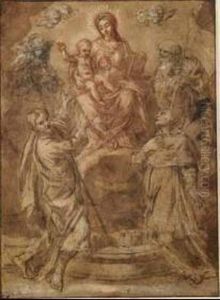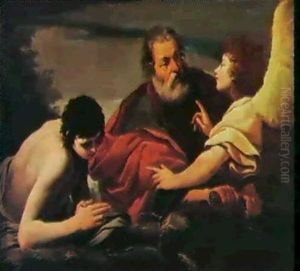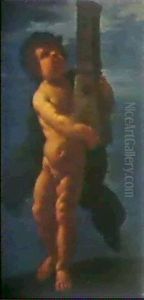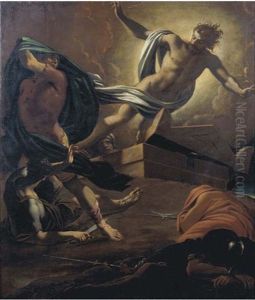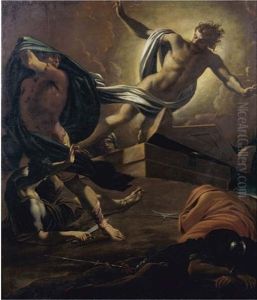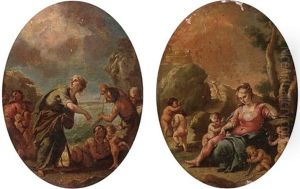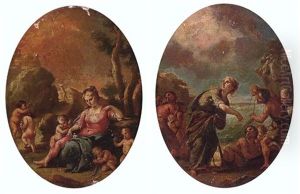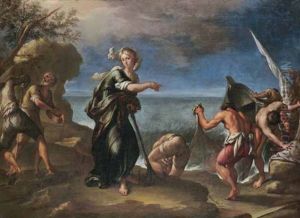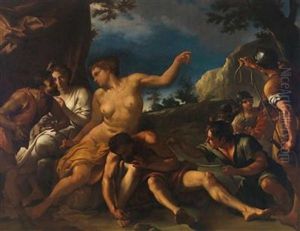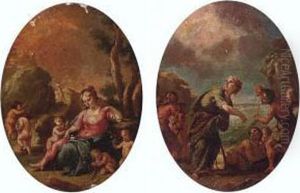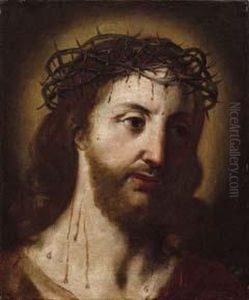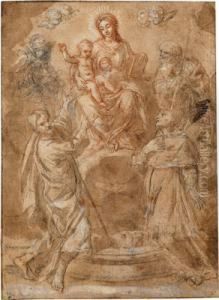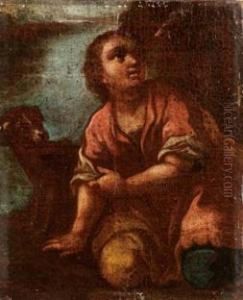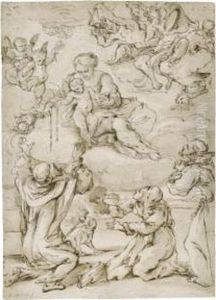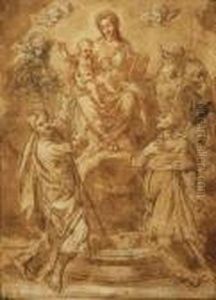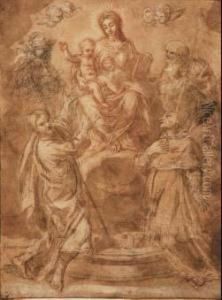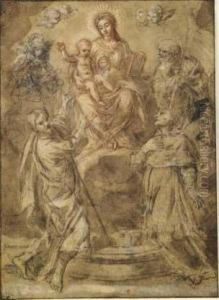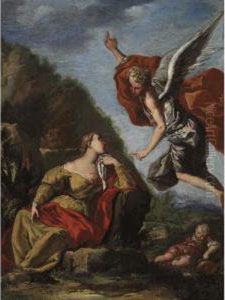Francesco Stringa Paintings
Francesco Stringa was an Italian painter and architect of the Baroque period, born in 1635 in Modena, a city then under the Duchy of Modena and Reggio. Despite not being widely recognized globally, Stringa made a significant impact on the art and architecture of his native city and the surrounding regions. Stringa was primarily known for his work in Modena, where he developed his style influenced by the prevailing Baroque aesthetics of the time.
Stringa was a student of the prominent painter Jean Boulanger, who himself was a follower of the Carracci school, a style that was highly influential in the development of Italian Baroque painting. Stringa's works were characterized by dynamic compositions, dramatic use of light and shadow, and a rich color palette that was typical of the Baroque movement. His paintings often featured religious themes, which were common in the period, reflecting the Counter-Reformation's emphasis on religious art as a means of inspiring devotion among the faithful.
In addition to painting, Francesco Stringa was also involved in architectural projects. He contributed to the design of several structures in Modena, blending his artistic vision with functional architectural elements. His understanding of space and structure, combined with his artistic skills, allowed him to create harmonious designs that were both aesthetically pleasing and practical.
Despite his contributions to the arts, Francesco Stringa's work did not achieve the same level of fame as some of his contemporaries. However, his paintings and architectural designs are still appreciated by art historians and enthusiasts for their representation of Baroque style in a regional context. Stringa died in 1709, leaving behind a body of work that continues to be studied and admired for its reflection of the cultural and artistic trends of his time in the region of Modena.
